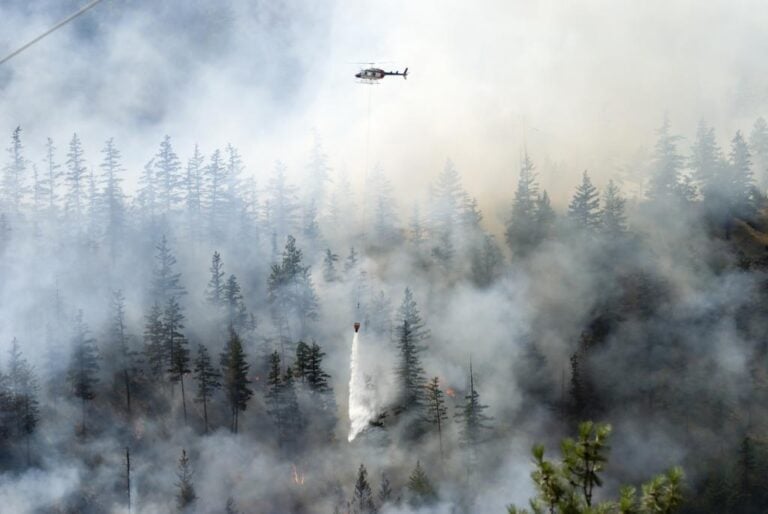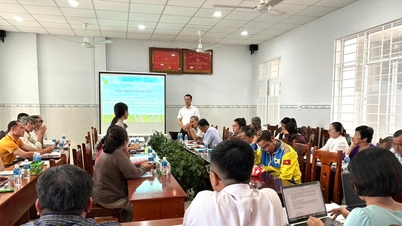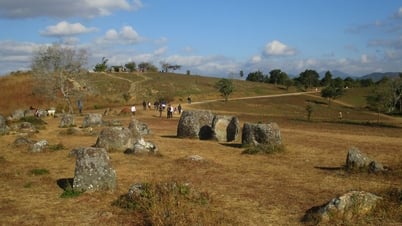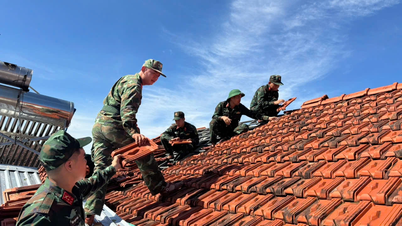The use of artificial intelligence (AI) in the detection and early warning of forest fires is being developed globally as climate change dramatically increases the risk of forest fires in countries around the world .
Recently, the California Fire Department (USA) has used AI to detect and control wildfires early. The program is called ALERTCalifornia. The purpose of the program is to detect fires earlier and reduce false alarms thanks to AI technology. Developed by engineers at the University of California San Diego, this platform takes advantage of 1,036 existing cameras, installed by government agencies and electric companies across the state.
[caption id="attachment_428056" align="aligncenter" width="768"] Climate change increases wildfires globally. Photo: iStock[/caption]
Climate change increases wildfires globally. Photo: iStock[/caption]“Our job is to keep fires within a 1.5-acre area, so with the help of AI cameras, we can get to the fires and control them faster,” said Suzann Leininger, an artificial intelligence specialist at the California Fire Department.
According to Professor Neal Driscol, a geology and physics major at the University of California San Diego, 5-6 years ago, to check fires, people needed to send planes or a whole squad. But now, just by turning on a camera, they can detect fires. They can show whether the smoke is far away, whether the environment is dark or not... These things help us assess the level of the fire and quickly put it out without having to call 911.
Tech site Alert California has revealed how this AI works, saying it uses LiDAR scans taken from planes and drones to create “the same accurate, three-dimensional information about the scanned surfaces.”
Combining this with the physical characteristics of the trees can help you learn more about the biomass and carbon content of California’s forests. The California Department of Fire Services says the machine learning model used petabytes of camera data to differentiate between smoke and other airborne particles.
At the World Economic Forum (WEF) Annual Meeting in January 2023, a report titled The Next Frontier in Fighting Wildfires: FireAId Pilot and Scaling was released. According to the report, the FireAId initiative, which uses artificial intelligence to effectively manage wildfires, has been successfully tested since the WEF launched it in January 2022.
The project is being implemented in Türkiye’s South Aegean and Western Mediterranean regions. The region was reportedly chosen because a quarter of the country’s wildfires occurred there between 2010 and 2021, and accounted for 75% of the total area burned during that period. Between July and August 2021, Türkiye experienced some of its worst wildfires, burning a total of 139,503 hectares.
Here, scientists used static and meteorological data to map areas where fires could start, predict intensity, and plan the logistics needed to respond effectively.
According to Weforum, thanks to successful application in Türkiye, the accuracy rate in forest fire forecasting 24 hours in advance is up to 80%. The information helps authorities prepare and respond proactively. The success of the pilot program shows how effective AI is in supporting management agencies and rescuing people, protecting property, protecting the environment, and significantly reducing damage caused by forest fires.
[caption id="attachment_428070" align="aligncenter" width="768"] Wildfire monitors at the University of California (USA) monitor a fire in July 2023 in Topanga Canyon, Los Angeles. Photo: New York Times[/caption]
Wildfire monitors at the University of California (USA) monitor a fire in July 2023 in Topanga Canyon, Los Angeles. Photo: New York Times[/caption]Climate change has increased the severity and frequency of wildfires in recent years, causing unprecedented biodiversity loss, carbon dioxide emissions and financial losses worldwide.
WEF statistics show: The average annual cost of wildfires globally is about 50 billion USD, while in 2021 global wildfires released about 6,450 megatons of CO2 into the atmosphere.
Meanwhile, the World Meteorological Organization predicts that the rate of extreme wildfires globally will increase by 30% by 2050 and double by the end of this century.
AI-powered wildfire detection systems use a variety of sensors such as cameras, satellites, and drones to detect fires in real-time, allowing for early response and timely action. These systems are proven to be efficient, cost-effective, and accurate in detecting fires, minimizing the impact of wildfires on the environment and local communities.
Minh Thai







































![[Photo] Da Nang: Hundreds of people join hands to clean up a vital tourist route after storm No. 13](https://vphoto.vietnam.vn/thumb/1200x675/vietnam/resource/IMAGE/2025/11/07/1762491638903_image-3-1353-jpg.webp)














































































Comment (0)